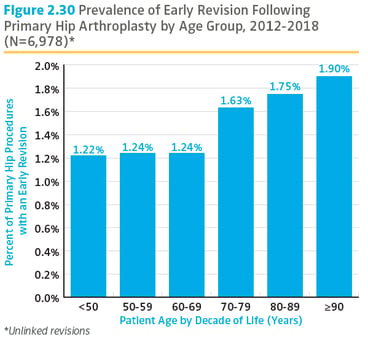
Guest Blogger: American Academy of Orthopaedic Surgeons (AAOS) Registry Program Committee Member Richard Seiden
Richard Seiden is the AAOS Registry Program Public Advisory Board (PAB) Chair and the PAB Representative on the American Joint Replacement Registry (AJRR) and Shoulder & Elbow Registry (SER) Steering Committees.
In this blog, Mr. Seiden shares his personal experience as a joint replacement surgery patient (he’s had hip replacements, knee replacements, and shoulder replacements). Mr. Seiden offers patients with joint issues helpful advice to better prepare for dealing with post-surgery physical therapy needs. He indicated that he hopes sharing his experience will be helpful to other patients, but his advice is not a substitute for consulting with your physician.
How to Choose a Physical Therapist
The principal characteristics of a physical therapy (PT) practice to consider when choosing your therapist:
- Location
- More than one physical therapist at the location
- Cleanliness and quality of equipment
- Ease of scheduling
- Use of PT aides
- Personal recommendations
- Physician recommendations
- Reputable Internet recommendations
- Participation in a patient-reported outcomes (PRO) survey program (learn more in the "Ask About the PROs Survey Program" section below)
- Personal rapport with the therapist during the initial assessment
- Check to see if the therapist is in your network of providers through your insurer
- Find out the co-payment and deductible for physical therapy from your insurer. There may be limits on the number of covered visits in a year or other time period
Ask About the PROs Survey Program
If your hospital or PT site participates in an AAOS Registry PROs program you will be asked a few questions about your progress. Your physician or PT staff should take the time to explain the importance of participation in the patient survey, including assurances as to confidentiality. Typically, a patient will be notified, by a member of their medical team, that they will be receiving a survey questionnaire via email at varying times after surgery. In most instances the questionnaire can be completed in less than five minutes and submitted via reply email from the patient’s own phone or computer. As an option, some patients may choose to participate through direct mail.
Your medical team can then use the patient-reported outcome measures (PROMs) that result to further evaluate and modify your treatment as needed. Beyond the physician’s office, the results of these surveys and specific patient information is de-identified before it is submitted to the registry. The few moments a patient spends on responding to a PROs survey can make a positive difference to you and, through a registry, to many other patients.
Initial Session
The physical therapist will require a prescription from your physician that indicates your diagnosis and suggested course of treatment. For example, if you have undergone joint replacement surgery, the surgeon will prescribe a course of therapy which may include the focus of therapy services, timing of basic services, and then expansion of scope of services as the patient improves.
The initial session will probably be limited to an assessment by the physical therapist. They will work from a checklist of questions, inquiring about your general health, the reason for your seeking therapy, the joints/muscles involved, areas of sensitivity, etc. Then they will use measurement devices to establish the baseline for your range of motion at the specific joints. They will ask you for your objectives in seeking physical therapy and your goals. For example, you may seek to return to swimming, or playing golf or tennis, or specific tasks for your employment (such as lifting, pushing carts, or stretching).
The physical therapist should discuss the frequency of your visits and may discuss what they expect you to be doing between sessions (home stretching or exercises, and things you should not be doing for the time being).
The physical therapist should let you know what clothing to wear to your sessions. Typically, either gym shorts or sweatpants and a top for exercise should work, with tennis shoes. You can see what other patients are wearing as a guideline. As a courtesy to others, some of whom may have allergies, do not wear strong deodorants or perfume.
You and the physical therapist should talk about reasonable timetables for your goals, returning to work, activities, etc. You may discuss your goals and understanding of the time and effort that it may take to achieve them.
It is important to understand that your success in recovery and rehabilitation will be largely dependent on your cooperation and adherence to the guidelines provided by your surgeon and physical therapist.
First and Later Sessions
You will probably start with some warm-up exercises, perhaps 10 minutes on a stationary bicycle or recumbent bicycle. For hips and knees, this would be followed by simple stretching, calves on a small slant-board, hamstrings on a table with one leg on the floor and the other stretched out where you try to touch your toes.
Some time after you have warmed up, the therapist will work on the areas that require attention, using stretching, resistance bands, massage, weight bands, and the like. These are tailored to your specific needs and the status of your recovery and rehabilitation.
The therapist will demonstrate how an exercise is supposed to be done. They will watch you and will suggest how you can adjust your form in order to maximize the benefit of the exercise. Sometimes, you may be using a technique that does not maximize the intended benefit of the exercise.
Remember to breathe during the exercises, and drink water as needed.
After the first session, the therapist will ask how you are feeling and how well you felt and how long it took to recover from the last session.
Basic Understanding and Expectations
In order to make progress during your physical therapy sessions, you need to understand and expect that you will experience the following:
- You will be asked to perform some exercises that will test your limits. It will take time to fully recover, and the principal way to make progress is to push yourself beyond normal limits a little bit in each session.
- You will discover that you will develop greater range of motion and strength over time. For example, you may be asked to do 10 repetitions, three times, for a specific exercise. Initially, you may be inclined to stop after the first 10, but you should try to do more, before you are truly uncomfortable and without harm. Push yourself a little.
- You should tell the therapist when you have reached your limit, and they will modify their request, working with you to ensure you continue to make progress without significant pain. Sometimes a grimace will work, but other times tell them what you are feeling. This is not the time to be subtle or soft spoken.
- The therapist should let you know which exercises should be performed at home to enhance the recovery process. Usually, walking or swimming are good exercise choices at least 30 minutes each day, when you are not having a therapy session.
- At the end of each session, the therapist will recommend that you have either a heating pad or cold pack applied to affected joints. Heating brings more blood to the area, and cold tends to decrease inflammation. In addition, the therapist may recommend electro-stimulation (via a TENS unit) to lessen muscular pain in or around the affected joints.
- The PROs survey responses submitted after the surgery can help support physical therapy decisions, as the patient describes which meaningful improvements they are looking for.
Establishing a rapport with your therapist and thanking them for their efforts on your behalf is always a good practice. I know I appreciated their help and, as it turned out, they helped me in subsequent recoveries.
Be sure to leave a comment in the form below!



